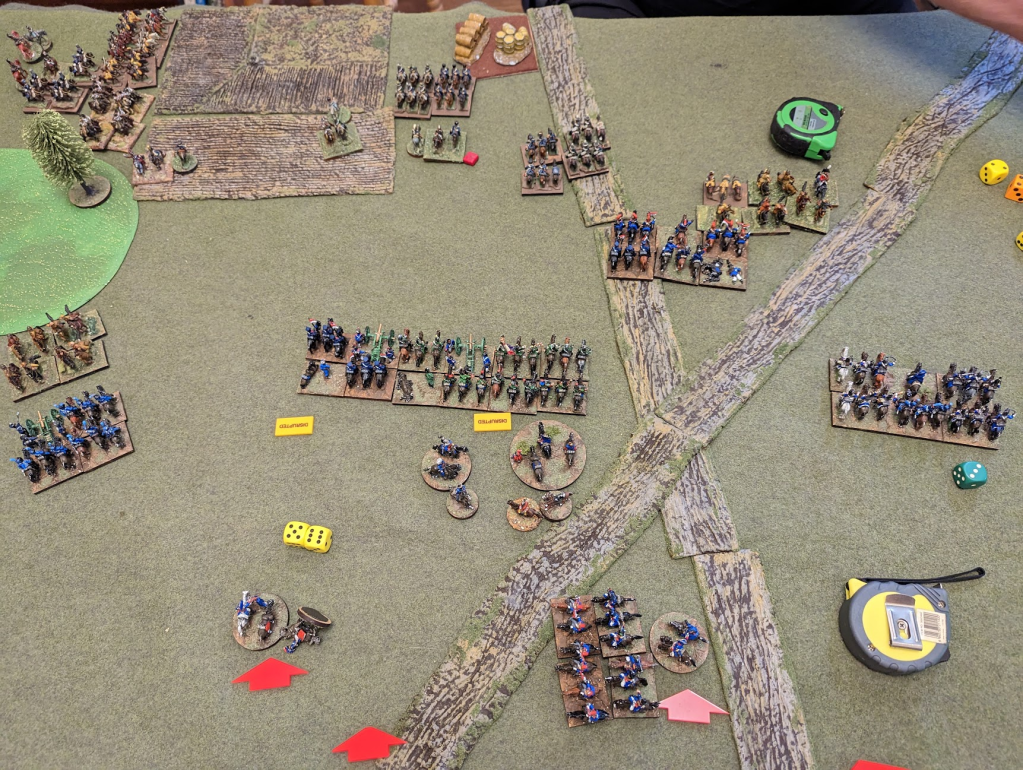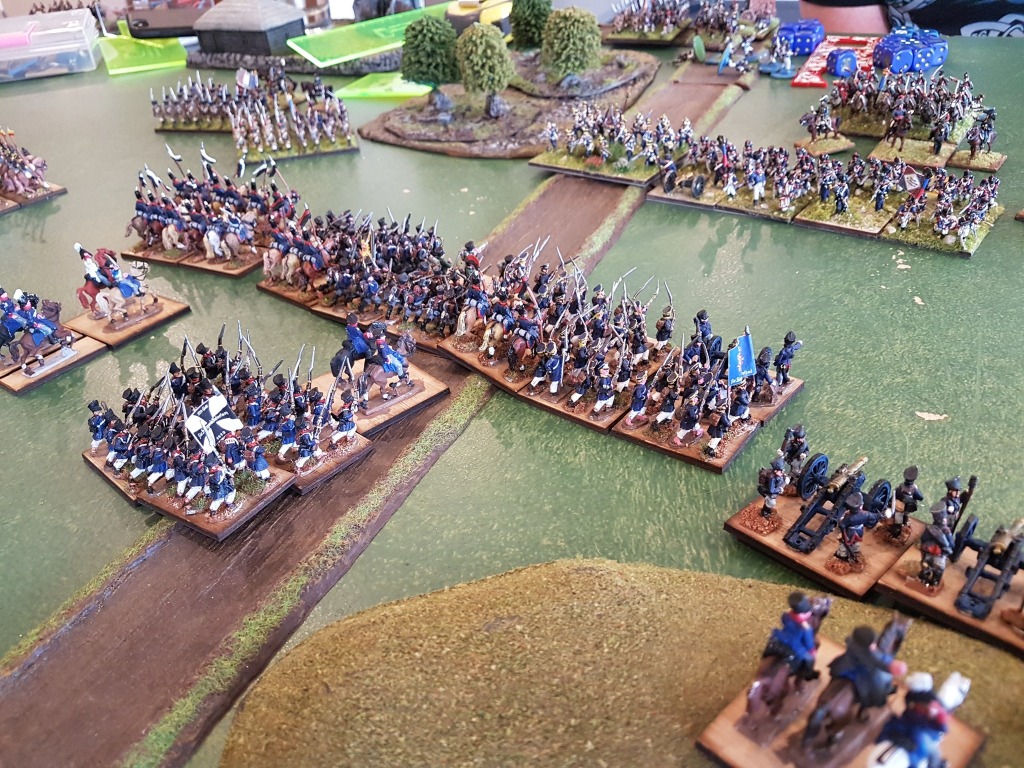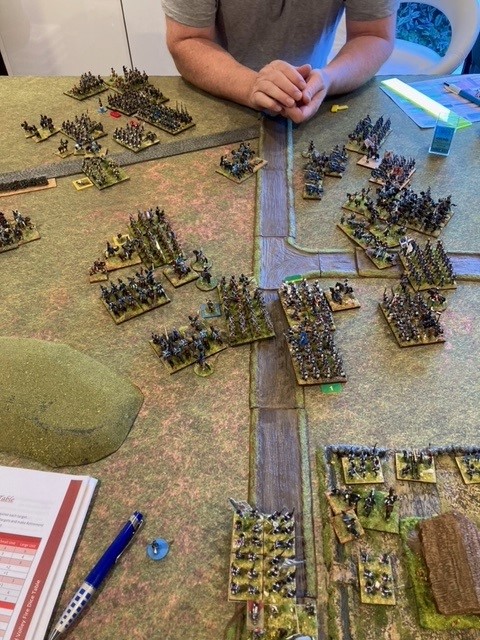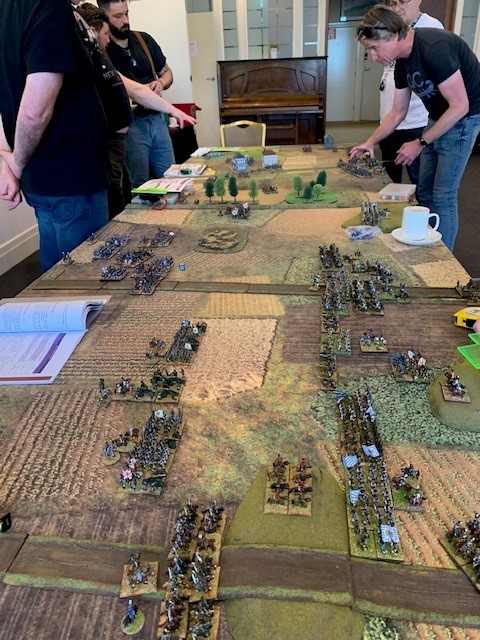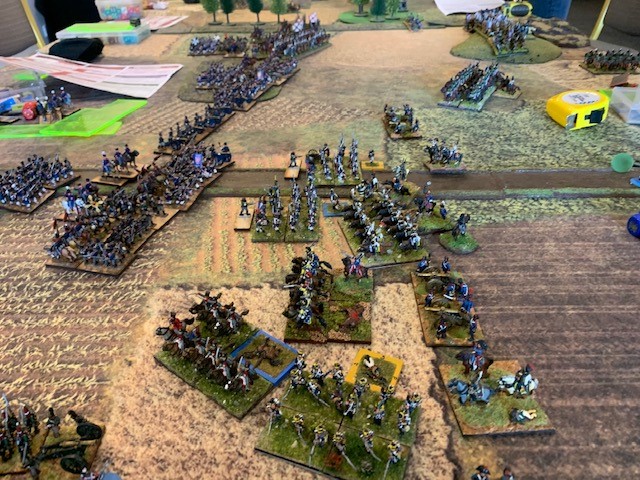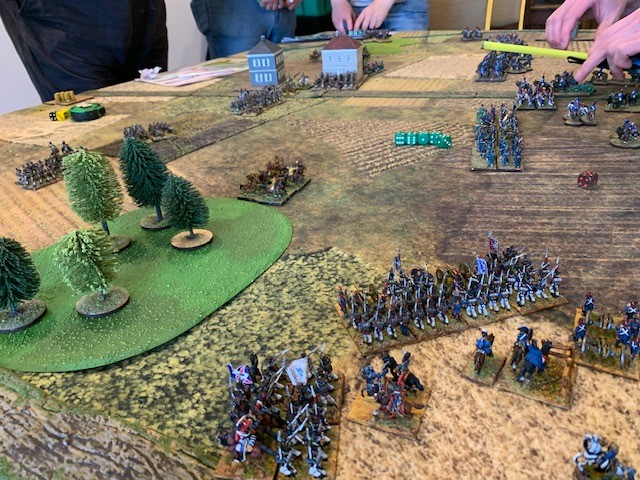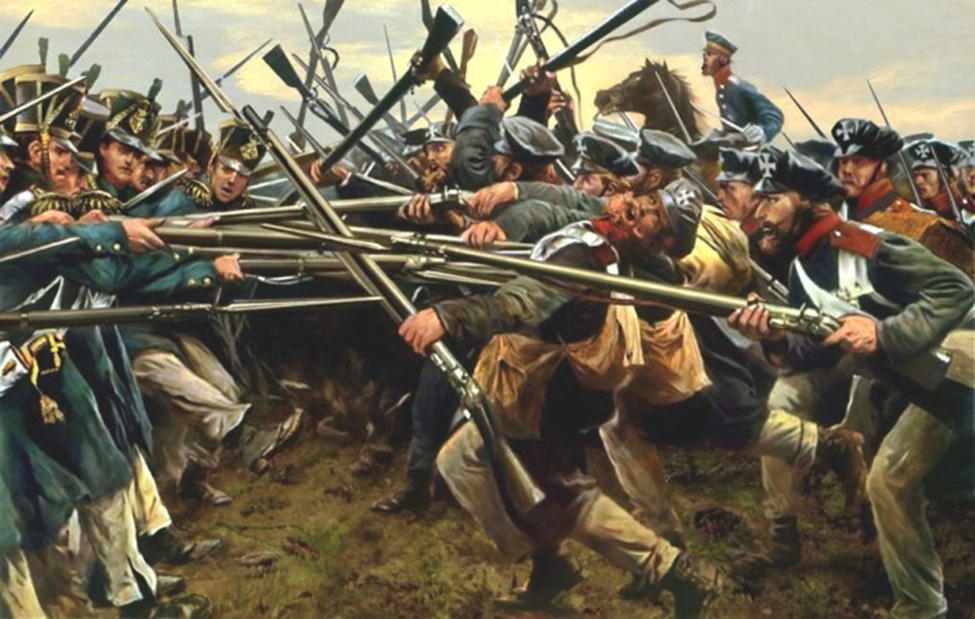Prussian and Russian forces combined today in a major battle at Goerlitz in eastern Saxony. On the southern end of the field, Barclay de Tolly pummeled the Saxons and Bavarians with massed artillery followed by a charge of the Grenadiers that drove the French allies back in precipitate retreat.

Immediately to the north of this encounter Wittgenstein was confronted by Bertrand. A bloody see saw cavalry fight ensued that at first looked like it was going the way of the French but some brave resistance from the Russians led to the green French troops starting to waiver. Only the intervention of Napoleon himself saw the French in this sector finally prevail, and as night fell the tired French conscripts were relieved to see the defeated Russians retreating in disorder.

In the centre of the field, Marshal Ney faced off against Miloradovich in a battle that was slower to develop. The Russian general held his ground and challenged the impetuous French marshal to dig him out of a strong position. After much maneuvering and counter moves, Ney was reinforced by a division of Guard cavalry that had force marched to the battlefield, and was able to force a breakthrough and drive the Russian troops back until they eventually broke.

In the northern end of the long battlefield, the campaign was decided where the Prussians under Blucher were soundly beaten by General Vandamme. The battle in this sector of the field seemed to be in the balance until the arrival of the Old Guard who had been marching all night to get to the field in time. Blucher’s conscripts fought bravely but a determined assault by the Guard punched a whole in the Prussian centre which, supported by an attack on the left, rolled up the Prussian line.
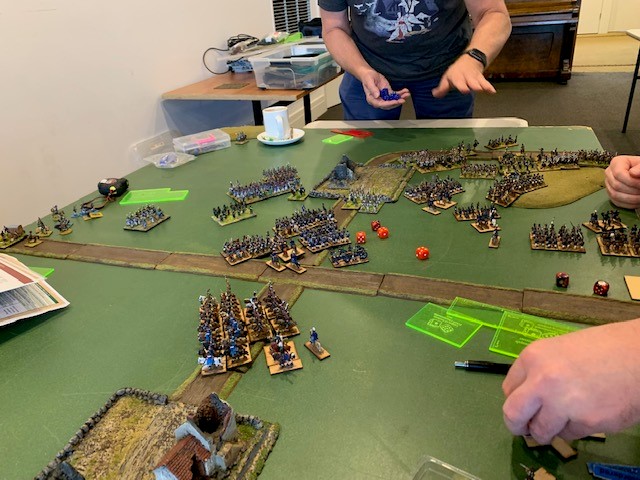
Despite Barclay’s victory in the southern sector, it was clear to the Allied commanders that they had suffered a grievous loss. Napoleon still had a strong force of cavalry to hand and these kept up the pressure on the retreating allies, not allowing them to regroup. Hearing of this victory in the east, Schwarzenberg’s Austrians prudently withdrew southwards.
The Allies had been unable to achieve a significant victory over the French but had suffered a number of defeats, culminating in a major defeat at Goerlitz.
With Berlin seemingly under siege by Marshal Oudinot and the Russians and Prussians in retreat in the east, the Austrians have announced their intention to seek terms from Napoleon. At the same time, the Tsar has ordered his forces to withdraw across the Niemen to regroup which while not constituting a request for terms has effectively left the Prussians isolated. The King of Prussian has accordingly sent emissaries to the French Emperor. Celebrations have been ordered across France and a victory parade through the capital is being planned. It would appear Napoleon’s throne is once again secure.
